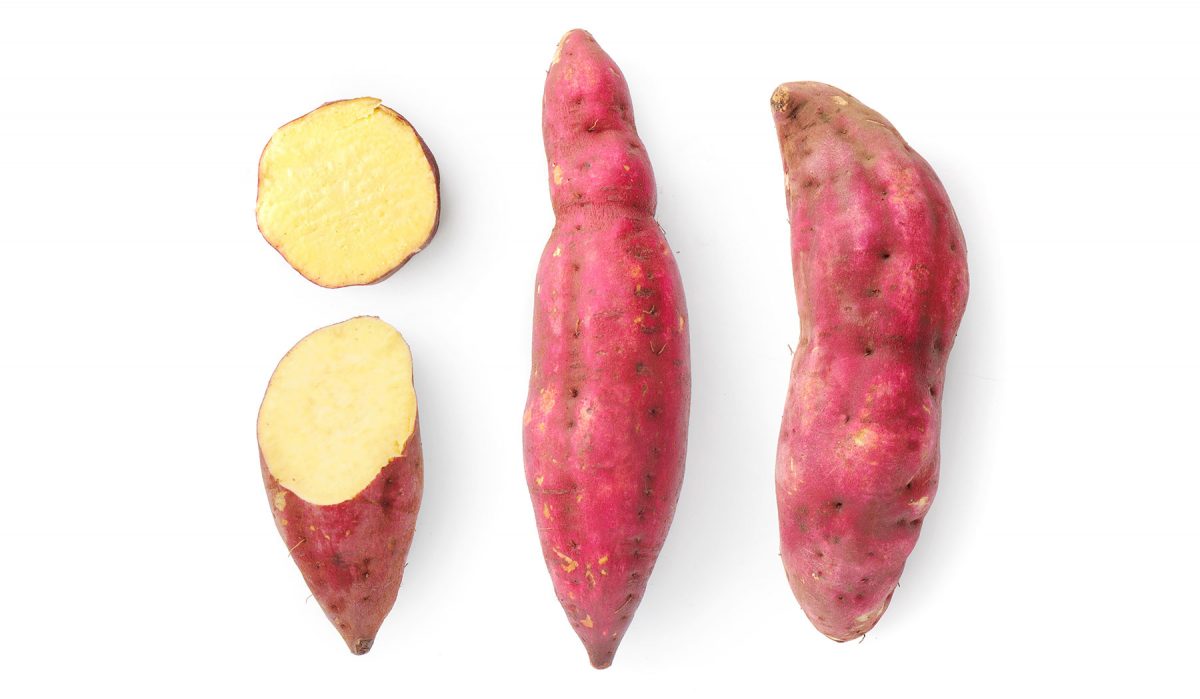Satsumaimo is a Japanese type of sweet potato, which is referred to as Kotobuki. It is also called Japanese Sweet Potato. The skin of the satsumaimo is a light burgandy-ish purple colour, and it is shaped like a typical sweet potato/yam of North America.
Typically eaten in the cold winter months, it makes for a nice treat that is extremely healthy as well.
To enjoy satsumaimo, simply wash it in cold water and wrap the satsumaimo in a good amount of tin foil, without peeling the skin off. Bake for about an hour or so in an oven at 375 degrees F. For the more traditional method, build a fire and let it die off a bit, until there are plenty of hot embers but not many flames. Place the satsumaimo onto the embers.
To make sure it’s done, simply prick with a fork in the centre and at the ends, much like you would test a regular potato. If the fork easily pierces the flesh, it’s ready.
Peel the skin off, and enjoy (but watch your fingers because it’ll be hot hot hot!). You’ll find the flesh to be a beautiful pale golden colour, sweet and the texture very smooth. I think it tastes much like a subdued roasted chestnut. Because it is a sweet potato, you’ll also find the slow release of carbs to give you energy throughout the day, satiating your appetite.
The satsumaimo is high in many vitamins, including B6, A and C. It is a great source of dietary fibre and potassium. Because of this, it was a cheap source of nutrients back when poverty was rampant (circa WWII), as they were easy to grow and provided enough sustenance when there wasn’t other food available. During this time, farmers sacrificed the quality of satsumaimo they grew, preferring larger rather than tastier ones.

4 replies on “Satsumaimo”
Can you eat the skin of the sweet potato imo?
We never eat the skin because it’s hard to digest, but I’m sure it’s not dangerous. Maybe it’ll add a little extra fibre!
i dont have a comment yet until i want to know where i can buy these
These can be found at just about any Japanese or Korean supermarket. Sometimes, you may even find them at Chinese/Vietnamese stores, although not always. They’re more popular in the fall and winter months, when they’re usually harvested, so it might be difficult to find them right now.